Red Szell's extraordinary journey to becoming the first blind person to scale the Old Man of Hoy
Losing his sight could have spelt the end of his passion for climbing - but it wasn't
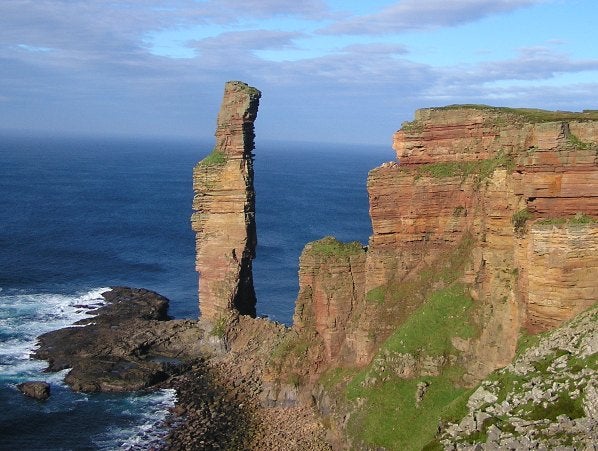
As a small child, Red Széll took the childish instinct to climb things to new heights, conquering the north face of his cot when he could barely walk.
Next came trees and rocks and, later, he took inspiration from mountain men Chris Bonington and Nick Estcourt, as well as Blue Peter’s John Noakes, who scaled Nelson’s Column with the help of a rickety ladder in 1977.
At university in Cambridge, Széll (pronounced “sail”) Spider-manned his way over buttresses and parapets, smoking a joint on the roof of the Fitzwilliam Museum before descending under the cover of darkness. He was invincible. “The sky really did seem like the limit,” he says.
Then, just as he felt like nothing could keep him down, Széll learned that he was going blind. A degenerative condition called retinitis pigmentosa was killing the rods and cones that give us vision.
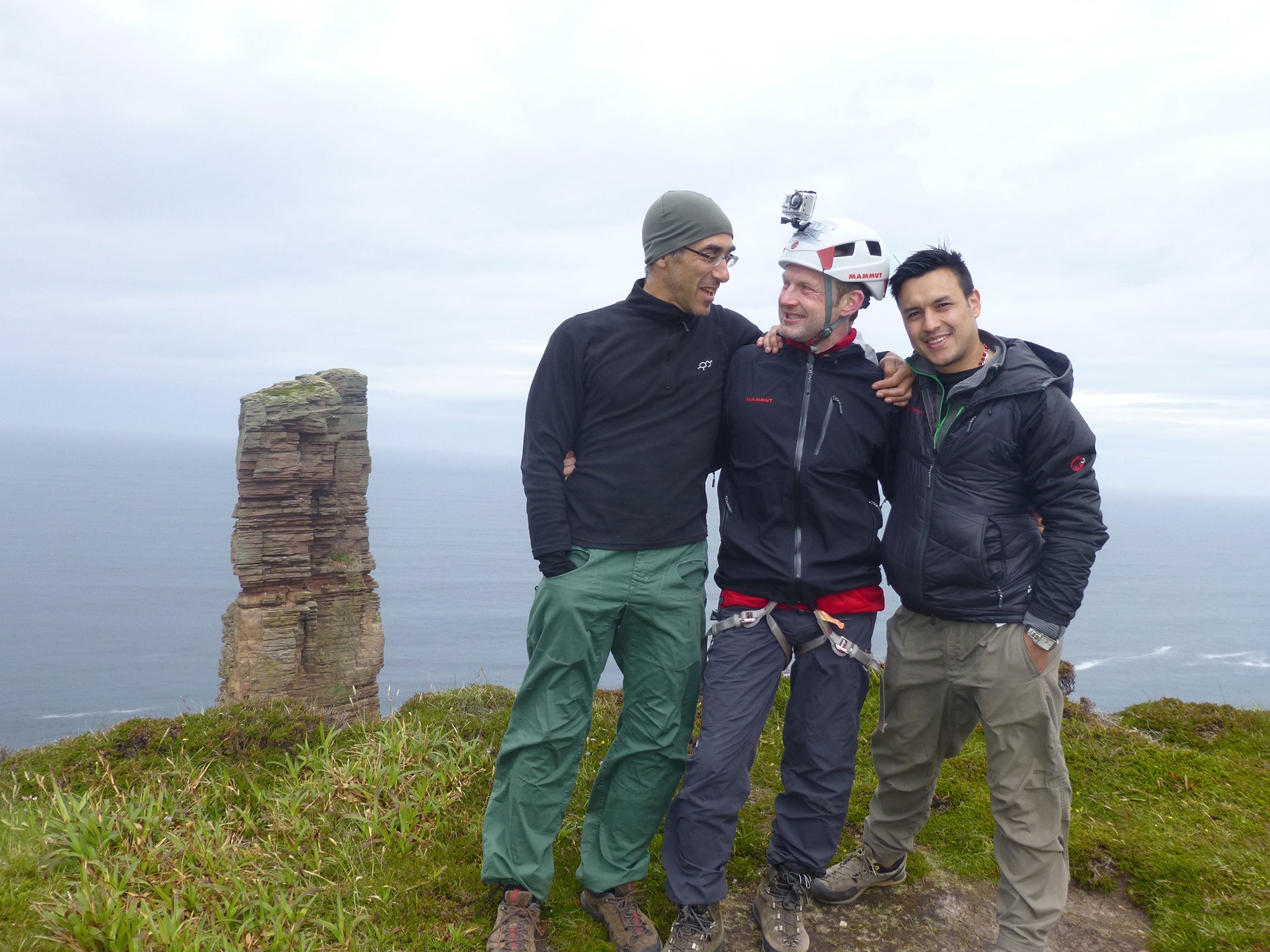
His sight would be reduced to just five per cent of normal within a decade. After a period of defiance, he began to withdraw. “I gave up climbing because it’s about trust,” he says. “I thought, ‘If I can’t trust my eyesight, how can I expect others to trust my judgment’?”
Depressed by his own disability, and the shamefully low expectations society has of blind people, Széll fought against what he calls his “rat”. “Some of us have this gnawing compulsion to push ourselves to the limits of endurance, and my rat was eating me up,” he explains. “I used to cycle for hours, climb, play rugby and run. Every one of those things that I needed to express myself physically had been taken away.”
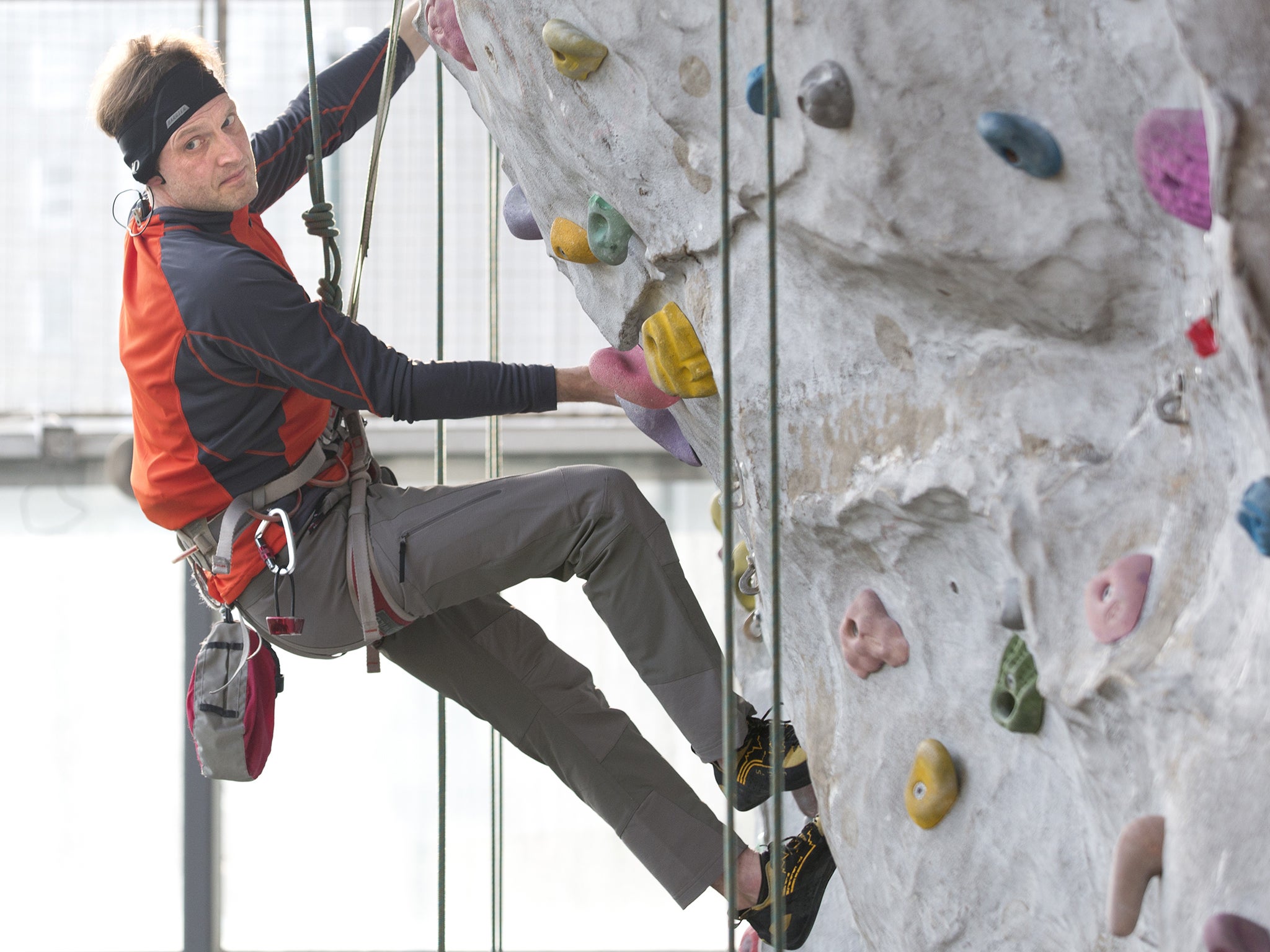
After learning to cage his inner rat – mostly – Széll, a Sussex man originally, settled in north London with his young family and became a writer. He is now 45. Life was fine, but the gnawing persisted, until his outlook changed dramatically one day in 2009. His eldest daughter had decided to celebrate her ninth birthday at the local climbing wall. “I left feeling my eyes had been opened to a world of new possibilities,” he says.
Széll has agreed to return to the wall, at Swiss Cottage Sports Centre, to offer a demonstration and – later – a lesson in blind climbing. He also recalls how a tentative return to the sport led him, four years later, to an audacious attempt on a giant sandstone pillar in the Orkney Islands.
The Old Man of Hoy rises vertically out of crashing waves, to a height of 137m (449ft). Almost three times the height of Nelson’s Column, it maintains a towering reputation among British climbers, 50 years after Bonington first scaled it. Széll always looked at it in awe as a child, but never thought he’d climb it. And after he went blind, how could he?
“But I’ve never particularly liked being told what I can’t do,” he says. At the base of the climbing wall, which is a tenth of the height of the Old Man of Hoy, the noise comes not from waves but the buses chugging around the one-way system below the open-sided wall. Széll ties a rope to his harness using a figure of eight, finished with a stopper knot.
“Any climber should be able to do this blind anyway,” he says. How much can he actually see? “I can see there is a bright light there.” He points towards the sun. “And I can just about see the shape of you and that there is a greyish wall. It’s like looking through a keyhole into a dark, smoke-filled room.”

Matthew Wootliff has joined us. A fellow amateur climber and former school-run acquaintance, he has become Széll’s eyes. He starts by placing his friend’s hands on the first holds.
Then, talking to him via an earpiece and radio headset, he watches his instinctive moves, and uses a clockface system, developed over months, to guide his limbs. “Left hand 11… right foot 5.30... right hand out... 2 o’clock... no… up a bit, up. Yep.” Apart from the occasional, plane-like circling before his hand lands on a hold, Széll climbs with remarkable fluidity, soon hitting the metal roof to announce his arrival.
At the other end of the rope stands the third member of Team Széll. Andres Cervantes is a softly-spoken Colombian PhD student and was one of the instructors at the Swiss Cottage wall who agreed, without hesitation, to help a blind man summit Hoy. Széll tells the story in his new book, The Blind Man of Hoy, with a foreword by Bonington.
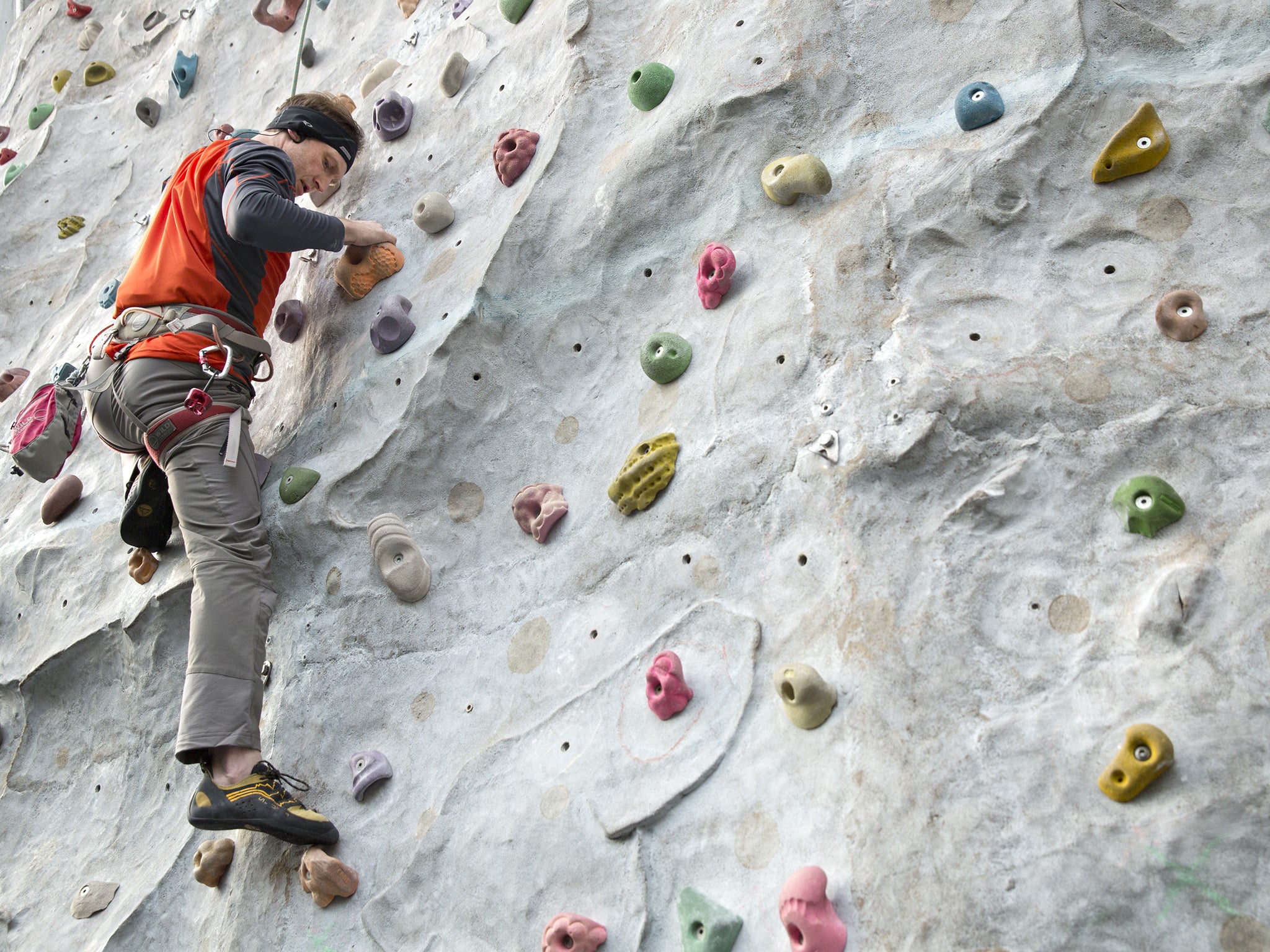
In 2013, after months of gruelling training and preparation, and periods of frustrated cursing, the trio made the journey to the Orkneys and – spoiler alert – they all made it to the top. Széll is, as far as anyone knows, the only blind person to have achieved the feat.
“Now it’s your turn,” Cervantes says. This time, Széll takes the rope as I step on to the wall for a sighted test run. He feels my progress, taking up the slack as I clamber up the wall. At the top, sweating and shaking, I do what Széll can’t, and look down – and shake a bit more. Perversely, he says, there are advantages to climbing blind. “I can just go into the zone and forget that I can’t see. I concentrate on the wall, and find that liberating.”
After a shake of my forearms, I put on a blindfold for another go. Cervantes places my hands on the first holds, and talks me through the first few moves using the clock technique. It’s disorienting, but the pain comes with the extra time it takes to locate each hold. While I flounder with one arm, the other one trembles under the strain. I also lose a sense of place, so that when I inevitably fall off, and swing on the rope like an ungainly fish on a hook, it’s only when I pull off my blindfold that I see I’m only three metres off the ground. Blind climbing is about as easy as it sounds.
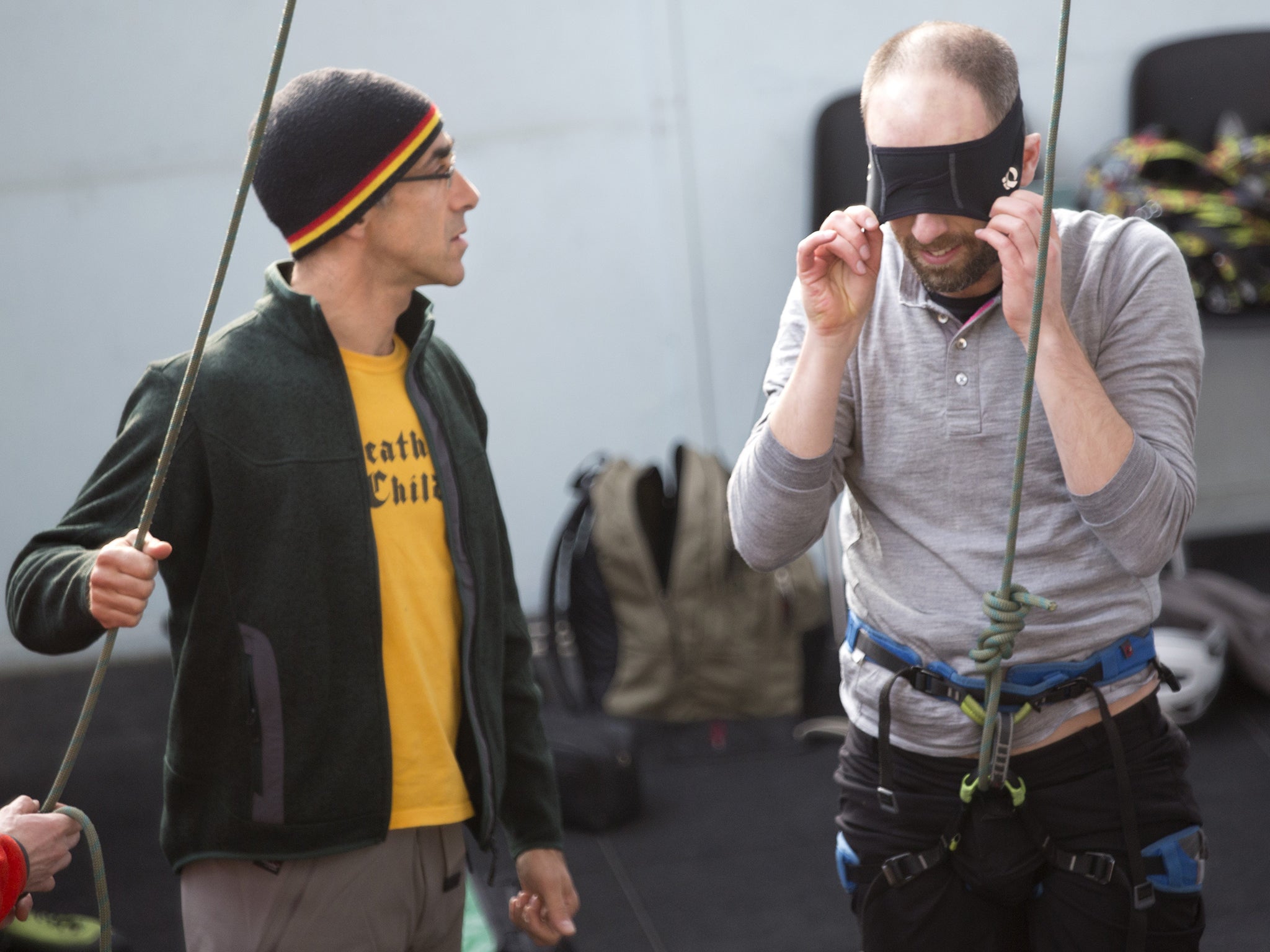
Széll’s book is not just an account of a climb, and the restoration of confidence and self-belief in a man who had lost his vision – and much of his hope. It is an examination of what we expect of blind people. “The perception is still that blindness means total sightlessness, and a sedentary life,” he says. “I want to challenge that, because it can often be the way that you’re treated for the rest of your life when you have a physical disability. It can grind you down as much as the loss of facility.”
Climbing is also very safe when it’s done properly. Széll, who uses a white stick when he’s not on the wall, was in most danger today on his way here. “A car mounted the pavement to do a three-point turn,” he says. “It missed me by an inch or two and I thought, how ironic if I’d turned up here limping and unable to climb because I’d been run over on my street.”
Széll, who has one other book to his name (Blind Trust is a crime novel with a blind protagonist), is now working on a sequel, while also looking for a second big challenge. There’s talk of a new climb, perhaps in the Alps, and a tandem cycle ride with Wootliff. Does his daughter, who inadvertently inspired this new life, still climb?
“She gets the heebie-jeebies at about seven metres but the younger one, Megan, is a better climber than me,” he says, his face stretching into a smile that beams with pride.
The Blind Man of Hoy: A True Story (£8.99, Sandstone Press), by Red Széll, is out now
Join our commenting forum
Join thought-provoking conversations, follow other Independent readers and see their replies
Comments